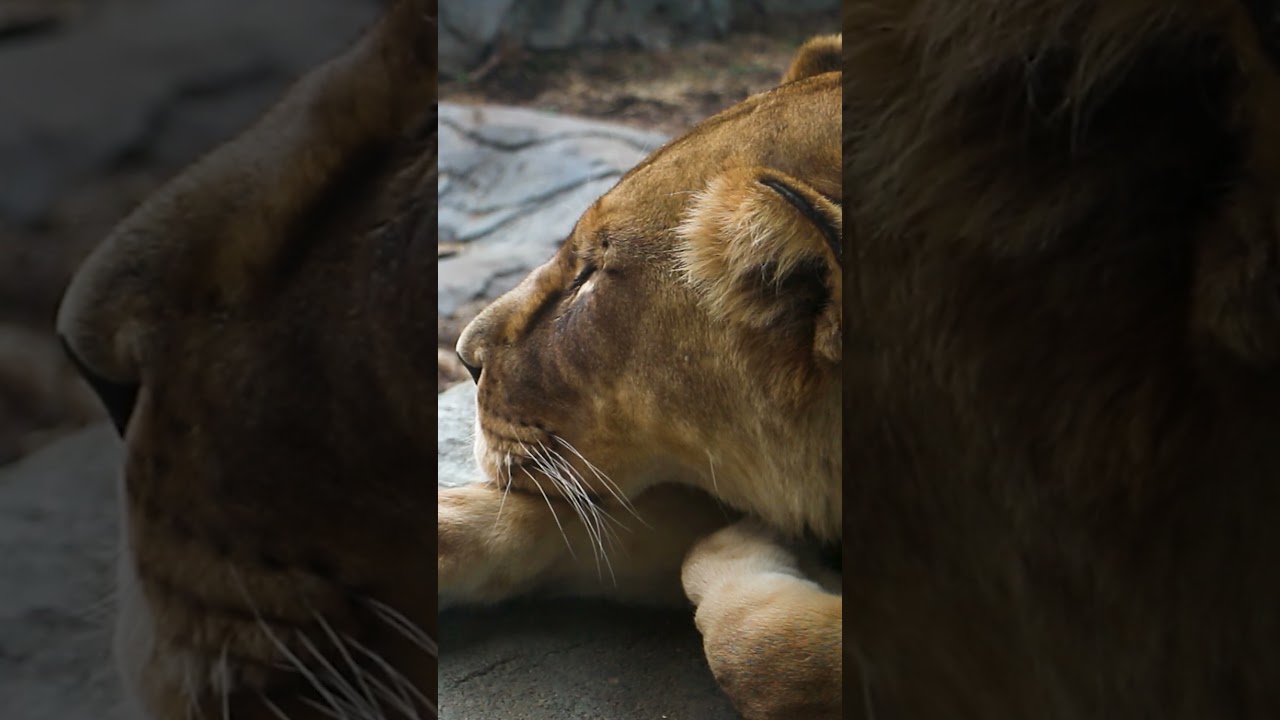– The importance of rest for animals in captivity, using the “Mondays are for naps | Blank Park Zoo” video as an example
– Insights into lion behavior and physiology that contribute to their need for rest
– The role of zoo management in ensuring the well-being of captive animals, focusing on rest and enrichment activities
– The significance of wildlife conservation efforts and how zoos contribute to the protection of species like lions
– How public engagement and educational programs at zoos enhance awareness and support for animal conservation
—
Much like humans, animals require rest periods to maintain their overall health and well-being. Ensuring these needs are met in captivity is a critical responsibility of zoo management. The “Mondays are for naps | Blank Park Zoo” video showcases a simple yet profound aspect of animal care that resonates across species, highlighting a resting lion as a captivating subject. This scenario opens a window into the nuanced requirements of animal welfare in managed environments.
Lions, known for their majestic appearance and social structure, possess physiological and behavioral traits that necessitate substantial rest periods. In the wild, these apex predators spend a significant portion of their day resting, upwards of 20 hours, to conserve energy for hunting. The featured lion in the “Mondays are for naps | Blank Park Zoo” segment echoes this natural behavior, emphasizing how zoos mimic natural habitats and rhythms to support the animals’ intrinsic needs. This resting behavior is not a sign of boredom or lethargy but an essential part of their survival strategy, which zoos strive to accommodate through thoughtfully designed enclosures and routines.
Managing animals in captivity extends beyond the basics of food, water, and medical care, delving into complex welfare considerations that include mental stimulation and physical well-being. In this context, the role of zoo management is multifaceted, involving the creation of environments that encourage natural behaviors, such as resting and socializing. Enclosures are designed to offer security and comfort, with secluded areas that enable animals like lions to engage in their natural resting habits. Simultaneously, enrichment activities stimulate the animals’ minds and bodies, creating a balanced routine that mirrors the diversity of their natural lifestyles.
Wildlife conservation is another critical aspect integrated into the daily operations of modern zoos. Through conservation programs, research, and public education, zoos play a pivotal role in the effort to preserve species and their habitats. The visibility of animals like the lion featured in the “Mondays are for naps | Blank Park Zoo” video is a powerful educational tool. It provides a direct connection to wildlife for visitors and raises awareness about the challenges these species face in the wild, including habitat loss, poaching, and conflicts with humans. Zoos contribute to conservation science, support in-situ projects, and foster a conservation-minded public, forming a bridge between people and the natural world.
Public engagement and educational programs at zoos deepen visitors’ understanding of wildlife and its conservation. Through firsthand experiences and learning opportunities, zoos inspire a sense of wonder and responsibility toward the natural world. Programs that highlight animals’ natural behaviors and needs, as seen with the lion’s resting behavior, emphasize the similarities between wildlife and humans. This fosters empathy and a personal connection to conservation efforts. Zoos encourage active participation in conservation, from reducing one’s ecological footprint to supporting conservation organizations, thereby cultivating a culture of stewardship.
The “Mondays are for naps | Blank Park Zoo” video encapsulates these themes, providing a glimpse into the life of a lion at rest within the zoo’s care. It is a compelling example of the intricate balance between animal welfare, conservation, and education that modern zoos strive to achieve. By prioritizing the needs and well-being of the animals, simulating natural habitats, and engaging the public in conservation, zoos like Blank Park Zoo play a crucial role in the broader efforts to protect and understand our planet’s remarkable wildlife. Through such dedicated efforts, zoos offer hope and a pathway toward a more sustainable coexistence with the natural world.
*****
Source Description
While some animals might like to frolic in the mud and rain, Deuce and Zarina prefer dry rock naps.


